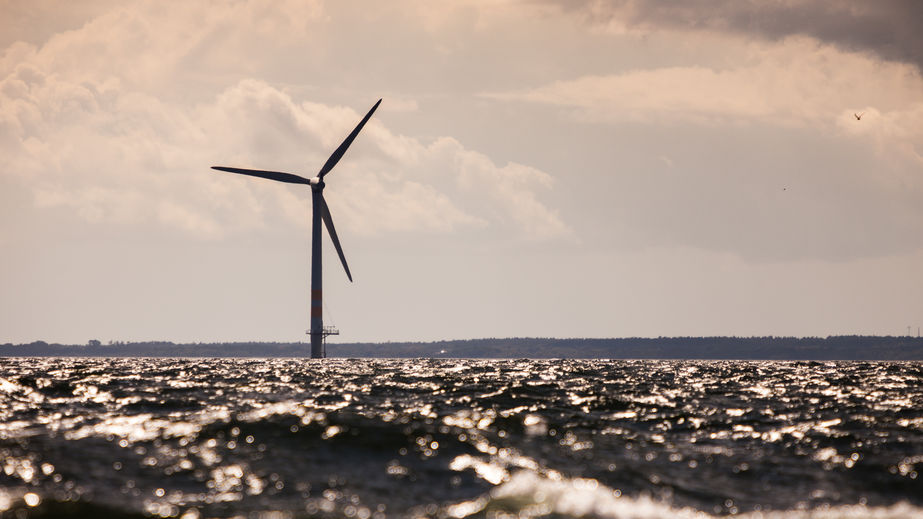Vineyard Wind 1 Project off the coast of Massachusetts, one of the crown jewels in the Biden administration’s plans to blanket the East Coast with offshore wind farms, could wreck the region’s commercial fishing industry and is now facing a serious legal challenge from – Texas.
The legal arm of the Texas Public Policy Foundation (TPPF) filed suit against the federal government in December, saying the feds had violated numerous laws in approving the project.
“The project would severely harm the commercial fishing industry in the area and destroy the lives of countless families, as well as create irreparable harm to the environment and ocean wildlife,” TPPF said in a statement.
Demonstrating that using environmental laws to stop a project is a game that two can play, TPPF took a page from the environmentalists’ playbook and citied the proposed projects violations of “the Outer Continental Shelf Lands Act, the Endangered Species Act, the Clean Water Act, the Marine Mammals Protection Act, and their respective rules and regulations.”
The suit also cites the governments statement in its Record of Decision, which says: “due to the placement of the turbines, it is likely that the entire 75,614-acre area will be abandoned by commercial fisheries due to difficulties with navigation.”
Consisting of 62 giant turbines, including the largest ever made, the Vineyard Wind 1 Project, billed as the country’s first “commercial-scale” offshore wind facility, is slated to go up 15 miles off the shore of Massachusetts. According to its developers, the project will produce 800 MW of power, which the Bureau of Ocean Energy Management (BOEM) (which approved the project) represents 10 percent of Massachusetts’ electricity needs.
Capacity is not Production
While the 800 MW of power looks impressive, that is the project’s “capacity,” which is not to be confused with the actual amount of electricity it will produce. Wind turbines, including those erected offshore, never produce anywhere near their capacity. Though more reliable than onshore wind turbines, which produce about 30 percent of their capacity, offshore turbines rarely ever reach 60 percent of their capacity.
The reason: Sometimes the wind just doesn’t blow, and when there is no wind or low wind, no power is produced. Europe experienced this late last summer, when usually steady and sometimes even gusty North Sea winds suddenly stopped blowing for weeks on end, contributing to Europe’s serious energy shortage. Furthermore, offshore wind turbines begin to lose efficiency as soon as they go into operation, and the loss of efficiency increased substantially over time. In other words, these monstrosities never deliver on their promise, no matter how high the subsidies nor how big the lies their advocates tell.
But the powerful interests backing them care nothing for the truth and rarely give a thought to the collateral damage they cause.
“There’s basically been wholesale sellout by the federal government of our fishing grounds,” Meghan Lapp, fisheries liaison for Seafreeze Ltd and Seafreeze Shoreside of Narragansett, R.I., told a panel hosted by TPPF in Austin in January. “We’re talking about the whole East Coast … and the obliteration of fishing on the East Coast.” (National Fisherman, Jan. 25)
“Once they put crap on the ocean floor (turbine foundations and rock moorings), we can’t tow there,” she added, explaining that these areas would effective be off limits to trawl fishermen.
The Bureau of Ocean Energy Management pays lip service to the economic and environmental carnage its approval of the project will make certain but cheerfully notes that Vineyard Wind has set aside funds to “mitigate the potential loss in economic revenue associated with the potential loss of fishing grounds.”
Europe’s transition from nuclear power and fossil fuels to renewable energy has already shipwrecked, leaving the continent, particularly Germany, perilously dependent on Russia for natural gas to make up for the power wind mills and solar panels will never produce. Meanwhile, ordinary Europeans — with the exception of the French who’ve had the good sense to retain their nuclear energy — are paying dearly for the climate schemes of their rulers. Their fate is similar to the one now facing U.S. commercial fishermen, which is why the TPPF lawsuit is so important.
